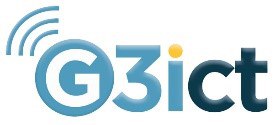As Courts Go Digital, Will Persons with Disabilities Have Access to Justice?
Posted on January 30, 2020

Vice President, Global Strategy and Development, G3ict
Today, G3ict is making public the results of an important access to justice survey we conducted recently. We partnered with the International Association of Court Administrators (IACA) to survey its membership, court system executives and managers from across 29 countries around the world. The results show that courts globally are becoming “smarter”. They are investing in information and communications technology. But our survey of court professionals also tells us that they know they need help learning how to ensure they implement digital technology in a way that makes courts more accessible and inclusive. A majority of those surveyed, working in and with courts, have a lack of awareness about disability and a lack of knowledge about accessible technology.
Our goal with this survey was to better understand how courts are deploying technology and how court professionals understand the link between accessibility and justice. The information we gathered can help courts and the technology industry make progress toward greater access to justice for the 1 billion persons with disabilities worldwide. Here is some of what we found:
- A majority (60%) of court professionals we surveyed were aware of the United Nations Convention on the Rights of Persons with Disabilities (UN CRPD) and their international commitments to access to justice.
- Survey respondents point to a range of ways that courts are using technology, including digital documents, digital case management (e.g. to track hearings and dispositions), and digital payments.
- But just 16% of respondents rated the accessibility of court technology deployments as high or very high. More than a third (38.36%) rated them as low or very low. For example, just 17% said that documents were available in accessible formats (i.e. formatted for use with a screen reader) and less than 10% pointed to the deployment of accessible mobile apps.
- More than half (54%) of respondents reported either broad or extensive deployment of mainstream technologies (e.g. websites, mobile apps, digital documents) both for internal and public use. Some courts had begun exploring the use of leading-edge technologies and smart solutions (e.g. AI and online dispute resolution).
- With this digital transformation, we see that procurement and standards could be key to greater access to justice. However, less than 10% of our survey respondents said courts had an annual budget for ICT accessibility and the digital inclusion of persons with disabilities. And the overwhelming majority said that today court procurement officials either did not or only inconsistently used ICT accessibility criteria when buying technology.
G3ict believes these new survey results can help courts and justice systems continue to chart a path toward greater progress on Article 13 of the UN CRPD. We recommend that courts as well as technology companies and civil society organizations look to G3ict’s eight interrelated strategies for leveraging technology to support greater access to justice for persons with disabilities, including:
- Amending existing legal frameworks to promote equality in courts and justice systems
- Training leaders and staff in courts and justice systems to better design and implement ICT accessibility strategies that support digital inclusion,
- Using their “power of the purse” to advance equality by purchasing only accessible courtroom technology,
- Involving persons with disabilities at each step in the process to improve access to justice





























